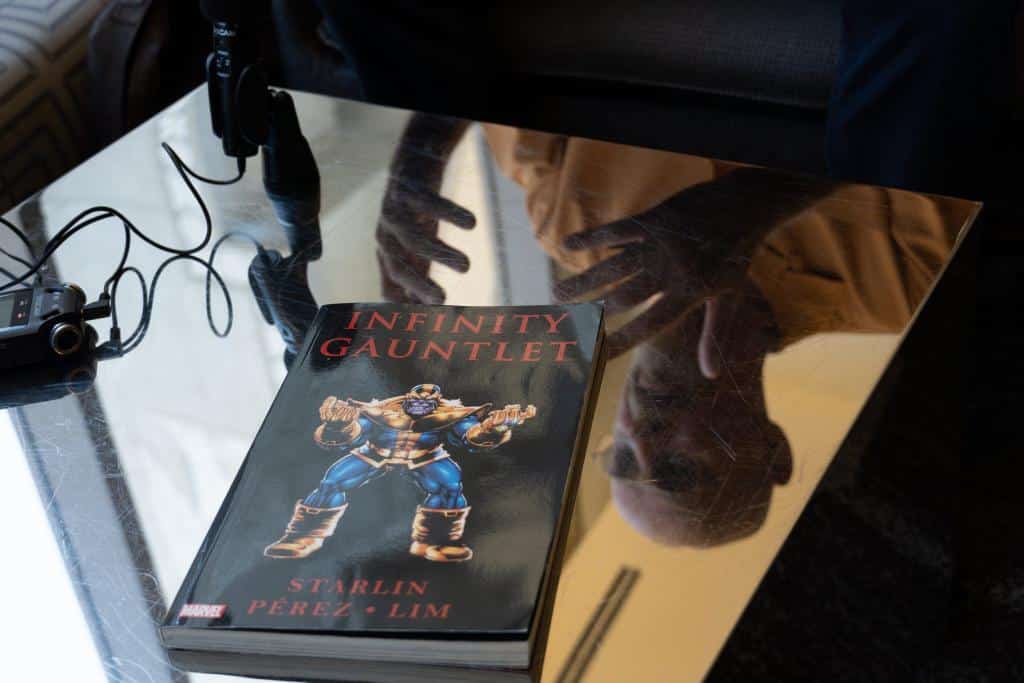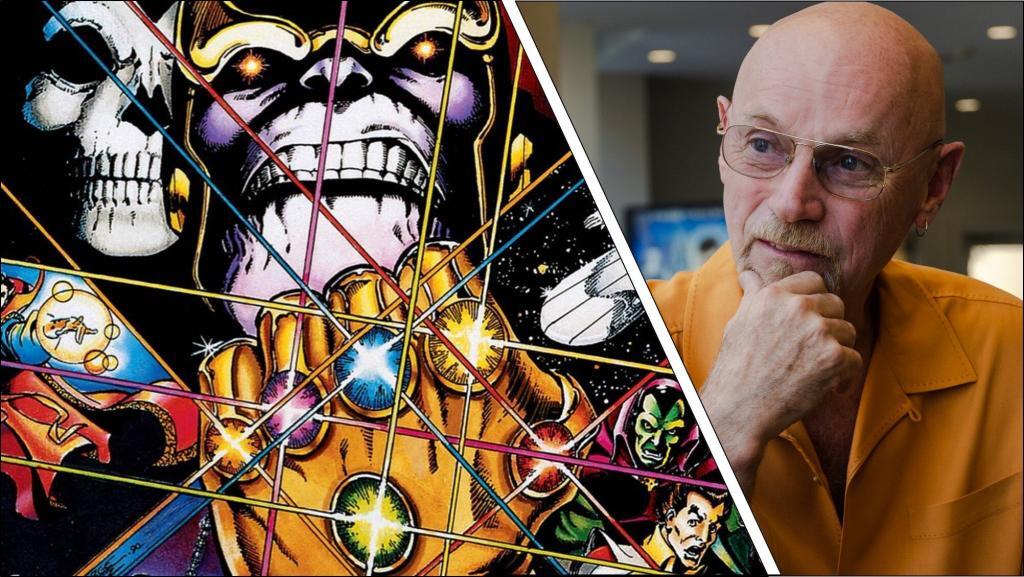Writer and artist Jim Starlin has carved his name in the stone of comic book history. His notable work in Batman: Death in the Family pushed the dark knight to his breaking point and would forever change the character’s life. The man’s work on some of the most iconic heroes and villains that have affected many readers lives over the years. While writing and drawing characters like Batman, Superman, Hulk, Silver Surfer, and The Flash, Starlin was able to create one of Marvel’s biggest baddie, Thanos.
The character’s impact on the Marvel universe has been a thing of legends thanks to the mind of Jim Starlin.
ScreenGeek had a chance to sit with the legendary artist and chat about his creations, his style of writing, and even a couple of pop culture moments involving one Mad Titan.
*Minor Spoilers for Avengers: Infinity War and Avengers: Endgame*
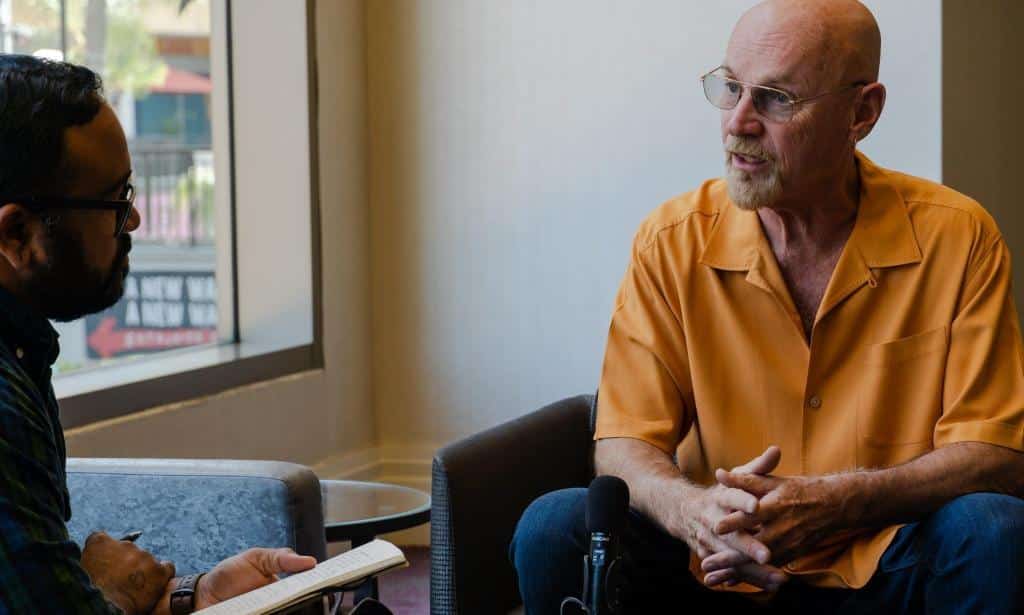
In the Infinity Gauntlet, Death is the main push for Thanos to do the Snap. Death is not included in the movies whatsoever. What do you think about that, and did Marvel consult you before they made that decision?
Jim Starlin: I found out why they wanted to take Death out, because the Marvel Universe at this point, they don’t figure the movie-going population is ready for the abstract end of these, such as Eternity and that. Talk is that it’s probably going to change with these Dr. Strange movies coming out. So, I was okay with it. I was kind of surprised when I found out what the new motivation was because it was straight out of Silver Surfer 34 which I had forgotten about. I didn’t realize that until after I read an article about it. Only a fool would figure that a multi-million-dollar production is going to do a page-by-page carbon copy adaptation of your work. It just doesn’t work that way. This is the real world. So I came in there saying give them flexibility because you’re just going to be disappointed otherwise, and I had done enough work where I had other things adapted into screenplay where I realized that things were going to change. What I was so pleasantly surprised about is how close they stayed to the spirit, if not the exact letter of the character and they really did as close an adaptation of Thanos as I think they could have under the circumstances of a different universe movie demands and what-have-you. So, I didn’t come in there looking for trouble. What I came in and found was a real pleasant surprise. I think he is so many ways very much my character. There were just a few little nips and tucks here just to and there to make him work for that particular universe.
I hadn’t read Infinity Gauntlet since I was a kid, but I was rereading it and I noticed there were certain characters that you would never think would actually go up against Thanos. You think they would get the big heavy-hitters. Was that your doing, or did Marvel say, “You can’t include these characters, or you can include these characters.”
Jim Starlin: When we did the Infinity Gauntlet, we went around to different editors and told them—they had done Secret Wars before with some mixed results on how these things work—so when we went in and were trying to get characters, an X-Men editor, in particular, was adamant, no X-Men. The only ones we were able to use were Cyclops and Wolverine. It was kind of funny, a number of editors were kind of hesitant about it and not all the books connected up to—they didn’t do crossover stories. So, when the Gauntlet came out and sales were phenomenal and everybody’s sales went up on the connected books when we got around to doing the Infinity War the next time, everybody wanted to be connected up with this project, including characters I had never heard of before, like Sleepwalker. They had to send me Xerox’s of what the character looked like so we could put him into the background in one panel. It was kind of a change at the point.
In a previous interview when Infinity War came out, you gave Josh Brolin high regard. I’m assuming you didn’t really have any say on who you want to cast.
Jim Starlin: No, no. I had my dream cast members, but uh—
Can you reveal who they were?
Jim Starlin: Oh sure. I was thinking it was it was going to be sort of a voiceover, over an animated thing. The motion-capture, I didn’t realize they were going to use. So, I was thinking of somebody as a post-cancerous Arnold Schwarzenegger or an Idris Elba. Somebody with a gravelly voice. Remember him for Luther? That voice would have been perfect. So, when Brolin was announced, I went, “Okay, that’s a little odd. Let’s see what happens”, but now that I’ve seen him up on screen, I can’t imagine anybody else but him playing him. Just the movement alone, the way he has this feeling of mass. The way he walks upstairs or turns and that. I just said, “Wow. This guy really studied the comic books and dialogue and everything, just to get this—he’s perfect.”
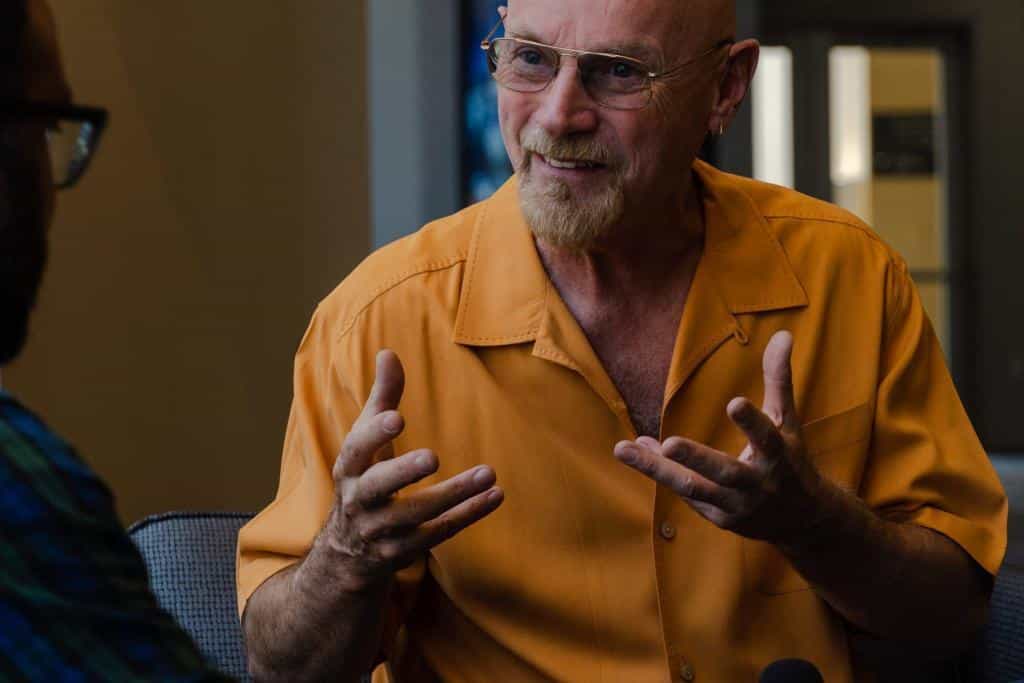
One of your other famous comic books is Batman: Death in the Family, which is, of course, the death of Robin. I read somewhere that you kind of had it out for Robin like you were coming up with all these ideas on how to do Robin. What is up with you? Why are you trying to take out Robin so badly?
Jim Starlin: Okay, if you decided you were going to go off and fight crime, and you were running around in a black and gray outfit, now you decide to bring a kid along and you dress him up in primary colors and send him out there to fight crime. That’s always sort of struck me as being beyond child endangerment. That’s just plain child cruelty, trying to kill him. You might as well put a sign up over your head saying, “Shoot the kid.” I never thought that Robin really belonged in Batman mythology and I tried to avoid using him in my stories and Denny O’Neal, who’s the editor who was always pushing it in—and when Denny came up with this idea of doing the phone gag, I had been pushing to get rid of Robin for at least 6 months at that point. So, he went along with it and the rest is history.
Were you expecting such a calling for Robin’s death when you put up that phone number? If so, did you expect it to be such a huge controversy?
Jim Starlin: Controversy, I figured as much, but the outcome was what surprised me. There were only 72 votes between him living and dying. Statistically, out of that 10,000 votes, that was a dead heap. I expected the comic book fans to be much more ghoulish than they were. I expected him to be overwhelmingly killed because he wasn’t a popular character at this time. So, when he actually was that close, I was kind of surprised. I tend to go out of the country when these things happen, it’s a habit. I was down in Mexico, so I never got to vote. It would have at least been one more kill on that one. It was kind of a surprise to me when I came back and found out that he wasn’t overwhelmingly voted down.
Of course, in comic books, nobody ever really dies. They’ll die for a little while, but—
Jim Starlin: Captain Marvel is still dead. He is one exception.
That’s right. Jason Todd was dead for a while and then he came back as the Red Hood.
Jim Starlin: He was dead for almost 20 years now that I think about it.
Do you ever get bothered when they bring back characters that you’ve killed?
Jim Starlin: No, these are commercial properties. Corporate properties are going to do with what they want. I have characters, like Dredd Star, that are my control of. And so, I am comfortable with Marvel or DC doing whatever they want. I’m kind of proud of the fact that Captain Marvel is still dead. I obviously did it up right. Once you get done with a character, you have to accept that other people are going to come along and work on it. As a result, I don’t usually look to see what they do with them afterward. As much as I like Donny Gates, I haven’t looked at Donny Gate’s Thanos yet until I get done with some final edits on what we’re doing on the Thanos graphic novels. You have to accept certain limitations and the way things are and you go with it.
You were a co-creator for Shang Chi. What inspired that. Was it because during that era, Kung Fu was a big thing?
Jim Starlin: It came from the TV series with David Carradine. Steve Englehart and I went over to Warner Bros. or DC and asked them if they would like to do an adaptation of the Kung Fu TV series. They weren’t interested. Roy Thomas was a little more hip to what was going on and realized that the TV series was a big hit and Bruce Lee was coming along and what they had was something that Marvel ought to exploit too. So, we started in on putting it together and then Stan came along, he had come along and bought the rights to Foo Man Choo. I think was the one mistake we did on that. Having finally read a Foo Man Choo book afterward, those books were of their time and didn’t reflect my viewpoint or anyone else’s once we got around to reading them. We sort of put it together from Holcroft and I liked the way Shang Chi came out. I had a lot of input on his characterization along with Steve. He was very good to work with on that. It was just that I wanted to do more Captain Marvel than I did Shang Chi. So, we went off and only did about 3 or 4 issues of the book and Paul Gacey came along and did a great job.
Kevin Feige has come out and said Shang Chi will be part of Phase 4. Have they approached you about insight into the character or your opinion about Shang Chi?
Jim Starlin: No, and if they did, I wouldn’t know what to do with him, actually. The trick is with doing that movie if you want to avoid just doing another Kung Fu movie, which there are a million of them out there. And that would lend itself most to it. They’re going to have to come up with a hook that makes him much more interesting than he has been in the books for it to work in the movies and I’m kind of curious to see what they do with it. But they won’t ask me about it. Especially after this interview makes clear I don’t know what the hell they’re doing.
Much of your writing covers death and suicide. Is there a reason for that? Or do you still delve into those themes now?
Jim Starlin: Well, Norman Mailer wrote one time that there’s no true story that doesn’t end in death. So, when I do something with Thanos, Dredd Star, any of these characters, they’re all playing high stake games, and sometimes you’re going to lose. I figure that the drama in it is trying to figure out who’s going to make it to the end of the series and so I try to keep things loose that way and if I think the story demands a character gets offed, he does. I’ll fill in that blank space with somebody else down the line if I have to or we’ll do some kind of revival thing and revamp. Basically, I am a very self-indulgent artist and I go where I think the story should go.
You worked on Batman, New Gods, The Hulk… Is there a particular character that you’ve always wanted to work on but never got the chance to, or a storyline that you wanted to create for any of the characters?
Jim Starlin: No, I’ve done just about everyone I’ve wanted to in the big companies. I have no desire to go back and work back there. I want to do my own stuff at this point, create my own characters. We’re going to bring back some more Dredd Star stories. We’ve got a big collection coming out now. In fact, it’s probably just coming off the press as we are sitting here talking, the first volume. And Ron Limm and I are planning on doing some new Dredd Star stories together.
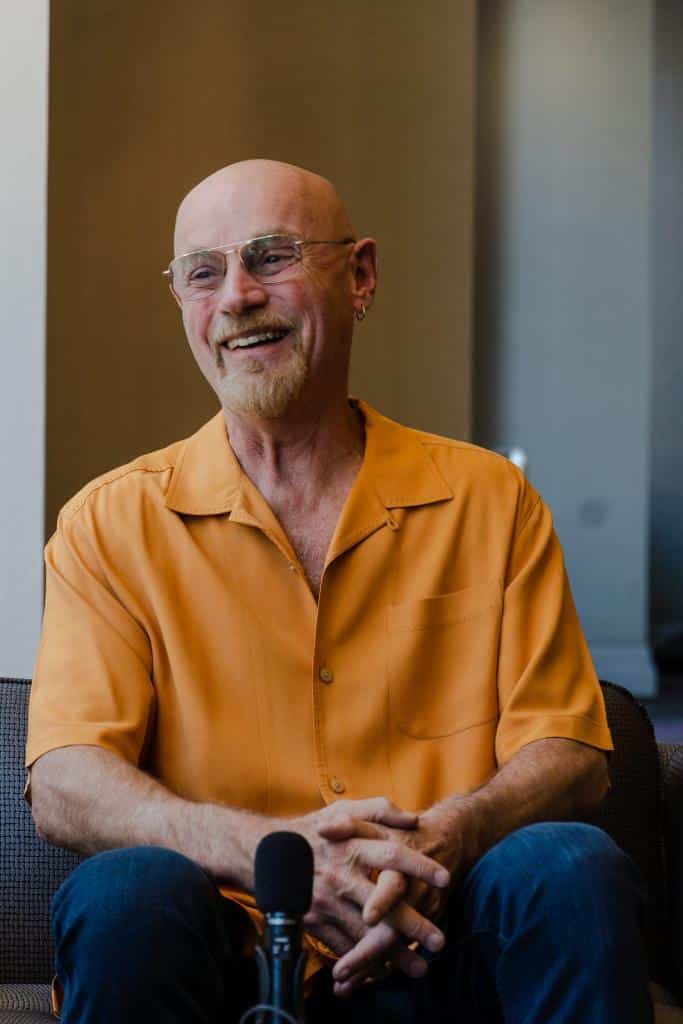
In ‘Spidey Super Stories’ issue 39, Thanos gets a helicopter. It’s called the Thanos-Copter. Was that your idea?
Jim Starlin: No, no, no. No! Not a chance! Part of the whole thing is, when you create a character for one of these companies, you have to accept that other people are going to come along and do ridiculous things with it. I think it was Larry Lieber who wrote that story, he was Stan’s brother, and they had this book that was for little kids. It was supposed to be an entry book. I had no idea it was going to happen and when they brought it over to me after it was in print and said, “What do you think of this?”, I just shook my head and said, “What can you do? It’s corporate property.” It has turned into a very long running joke it seems to be.
People actually want to see that. Well, they wanted to see that. They probably won’t now.
Jim Starlin: I wouldn’t be surprised there’d be a toy, a Thanos-Copter down the line here somewhere along the way.
There has been this whole weird theory about the Avengers defeating Thanos by Ant-Man crawling up Thanos’s butt and expanding. Have you heard it and what’s your opinion on it?
Jim Starlin: It’s an internet little bit of nonsense. I heard about it. What I find most amusing is the reaction to it. What’s a guy from Hayden Planetarium? The astrophysicist who’s always on the Colbert Show.
Oh, Neal DeGrasse Tyson.
Jim Starlin: Yes, thank you. He came out and commented on it. I thought that was kind of amusing. I think more the rebuttals and the responses to it. Paul Rudd, I understand said, “Can’t we go for another orifice,” or something like that. It was another bit of the run-up nonsense to the movie that there was a lot of. I think that just became the biggest one out there. It was like a helicopter.
I have to comment on your appearance on Avengers: Endgame. Did the Russo brothers approach you to appear in the movie, or was it a last-minute addition?
Jim Starlin: No, I did this little—on my Facebook page I did this little joke saying, “Russo brothers, I’m ready for my closeup,” and somehow that got to them. Next thing I know, one of their producers is calling up and saying, “We’d like you to come down to Atlanta.” And I’m going, “Wow, this is cool.” And so, we went down there, did the scenes, sat around all day. I’m waiting for the movie to actually come out. I’ve got a lot of photos she snuck. She wasn’t supposed to be taking pictures, my wife. We’re going to run those on Instagram. It was kind of cool. It was basically something I didn’t plan that happened, and I enjoyed the hell out of it. Showing up on the film was pretty cool, actually.
